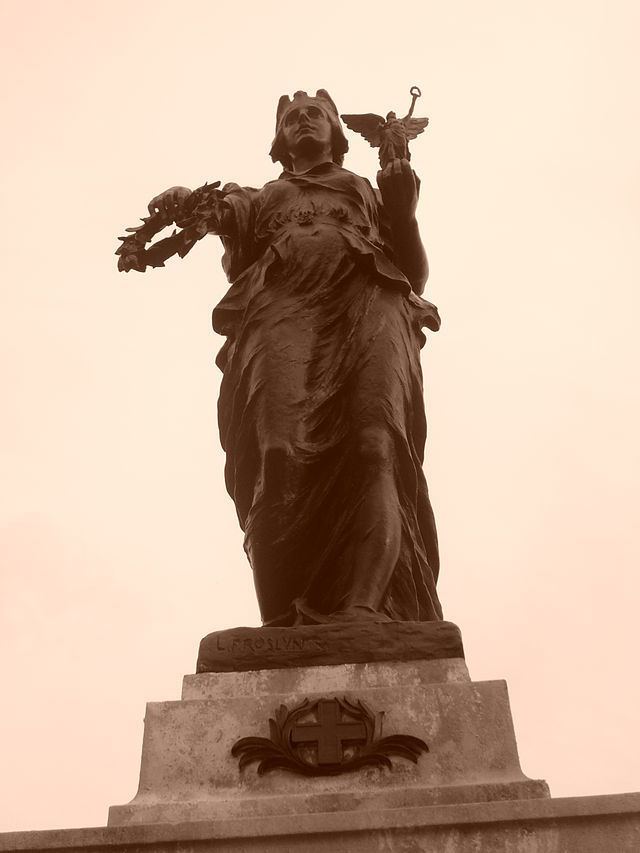Known for Sculpture Name Louis Roslyn | Died 1934 Education Royal Academy of Arts | |
 | ||
Born 13 July 1878 ( 1878-07-13 ) London, England Nationality English of German extraction Similar People Iain Macmillan, Sophia Jex‑Blake, Jenny Geddes, Gavin Douglas, William Kirkcaldy of Grange | ||
Louis Frederick Roslyn, born Louis Frederick Roselieb (13 July 1878 – 1940), was a British sculptor noted for his World War I war memorials and other sculptures. Before beginning his career, he studied at Westminster City & Guilds College and the Royal Academy. He enlisted in the Royal Flying Corps in 1915, but for medical or other reasons was put on the reserve until 1917 when he was called to the School of Military Aeronautics and subsequently made Lieutenant. It seems to be during his military service that he finally changed his name to Roslyn.
Contents

Personal life

Louis Frederick Roselieb, later Roslyn, was born on 13 July 1878 in Lambeth, London the son of George Louis Roselieb, a German sculptor who came to England from Germany to work.
Louis Roselieb attended Westminster City & Guilds College before joining the Royal Academy, where in 1905 he was awarded a two year Landseer Scholarship for sculpture. Once he started to practice, his studio was located at "The Studio" in Clapham, London.
From 1906 to 1916 Roslyn worked at The Standard Plating Works in Rosebury Avenue. He was a "Sculptor and Electra Metallurgist". He enlisted in the Royal Flying Corps in 1915 under the name of Louis Fritz Roselieb. At the time of his enlistment he was 38 years and 5 months old and his height was 5 feet 6.1/2 inches. His wife was Ethel Roselieb and they had three children, Claude Frederick (12 years), Edward George (9 years) and John Bleckly (3 1/2 years).
At some point during his military service Roselieb changed his surname to Roslyn. It is not entirely clear when this decision was made; the statue of Edward VII had been done under the name Roselieb in 1911, whereas his work on the Imperial Buildings in 1914 was signed Roslyn.
Roslyn executed sculptural work for many war memorials in England and Wales. He also executed a war memorial in Trinidad, West Indies. The Duchess of York and Duchess of Connaught were among those of whom he was commissioned to do portrait busts. He was a Member and then Fellow of the Royal Society of British Sculptors. His membership commenced 1914 and his Fellowship commenced in 1923.
Military service
The young Roselieb, who often added "Vai" to his full name, enlisted in the Royal Flying Corps on 12 December 1915 and he described himself when enlisting as "a sculptor and living in Clapham" and to be working as "a sculptor and electra metallurgist". Rosyln was passed as fit to work on "electro deposition of various metals for use in connection with Aero Engines” and was deemed medically “fit for service anywhere but not combatant service”. Incidentally in his records and with no explanation, it was recorded that Lord Derby did not want Roslyn called up before 1 June 1917.
Having enlisted, Roselieb was put on the reserve, and in June 1917 was called to the School of Military Aeronautics, Royal Flying Corps, Reading, as an Equipment Officer, 3rd Class on probation. As a result of this appointment Roselieb was gazetted as a Temporary 2nd Lieutenant under the name Louis Frederick Roslyn. Subsequently he was promoted to Lieutenant. His record is part of the AIR 76 series.
